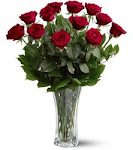Christmas season. Whether you decorate the rest of your home or not, you'll likely want to add a festive touch to your Christmas table. Christmas centerpieces are the perfect way to create a warm and celebratory mood for your family and your holiday guests. If instead of hosting the meal yourself you will be enjoying someone else's holiday hospitality, a beautiful Christmas centerpiece is a beautiful gift to express your gratitude and contribute to the festivities.
Traditional Elements for Christmas Centerpieces
A Christmas centerpiece can be a great way to bring cherished Christmas traditions to your table. Here are some of the most traditional Christmas decorative elements that often appear in centerpieces.
Evergreen
One of the most prevalent parts of Christmas decorating traditions is the evergreen. While perhaps the most visible evergreen element in most homes is the Christmas tree, evergreens also often appear in wreaths, garlands, and many table centerpieces. Evergreen is connected to Christmas by ancient traditions of the symbolism of vibrant life even during the harshest of winters. With its distinctive scent, fresh evergreen often immediately evokes a Christmas mood through multiple senses.
Mistletoe
Today we often associate mistletoe with Christmas kisses, and this tradition comes from the plant's long history of symbolism. Ancient Europeans considered mistletoe a sacred plant and also associated it with fertility. Like the evergreen, mistletoe remains green through the winter. Incorporating mistletoe into holiday centerpieces is not as conventional as hanging the plant in a doorway, though mistletoe makes a festive addition to any Christmas tablescape.
Holly
With its green leaves and red berries, holly is a natural decoration for Christmas. Holly played a part in ancient Celtic rituals marking the solstice and its prickly leaves were believed to provide protection against malevolent spirits. Christian tradition also attributes importance to these pointed leaves, associating the barbs with Jesus's crown of thorns and the red berries with his blood. Holly can make a beautiful centerpiece display all by itself or as a part of a collection of other traditional Christmas elements.
Ivy
Holly's partner in the traditional Christmas carol "The Holly and the Ivy," ivy has symbolized eternal life for centuries and in many cultures. Ivy was used by the ancients to form wreaths and garlands, and was associated with the god of wine and revelry, Bacchus, by the ancient Romans. The plant's connection with both eternal life and festivity makes it a perfect decoration for the Christmas season. Ivy is more prevalent as a part of Christmas ornamentation in England than in the United States, but it is a beautiful enhancement for Christmas centerpieces anywhere.
Poinsettia
The poinsettia plant is native to Central America and was introduced to the United States by Joel Roberts Poinsett, the first American Ambassador to Mexico. A symbol of purity to the Aztecs, the poinsettia was also of practical use as a source for dye and medicine. The poinsettia's assortment of red and green leaves makes it a perfect fit for Christmas; in fact, it is sometimes called the Christmas plant. In recent years, poinsettia plants have been cultivated in a variety of colors and sizes, offering a number of options for holiday decor.
Candles
Candles are often a part of special centerpieces throughout the year, but they take on particular significance at Christmas. Light has always been a powerful symbol of the illumination that faith, family, and celebration bring to us even in the darkest days of winter. Whether you choose a centerpiece with multiple small votives, classic tapers, or a larger diameter candle, bringing extra light to your Christmas table is always a beautiful choice.
Sunday, December 9, 2012
CHRISTMAS TIPS AND TIDBITS
Posted by Jacobsen's Flowers, Inc. at 6:19 PM
Subscribe to:
Post Comments (Atom)
























0 comments:
Post a Comment